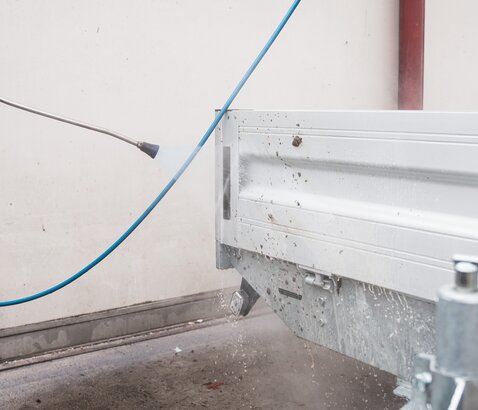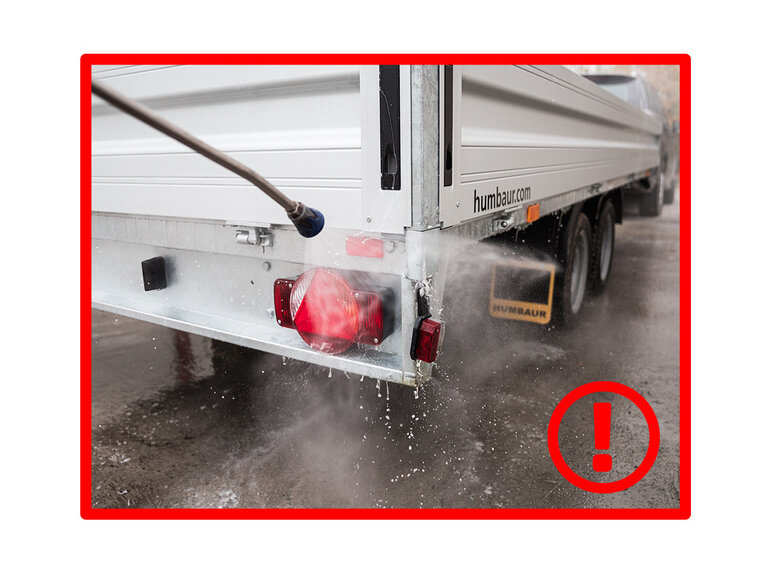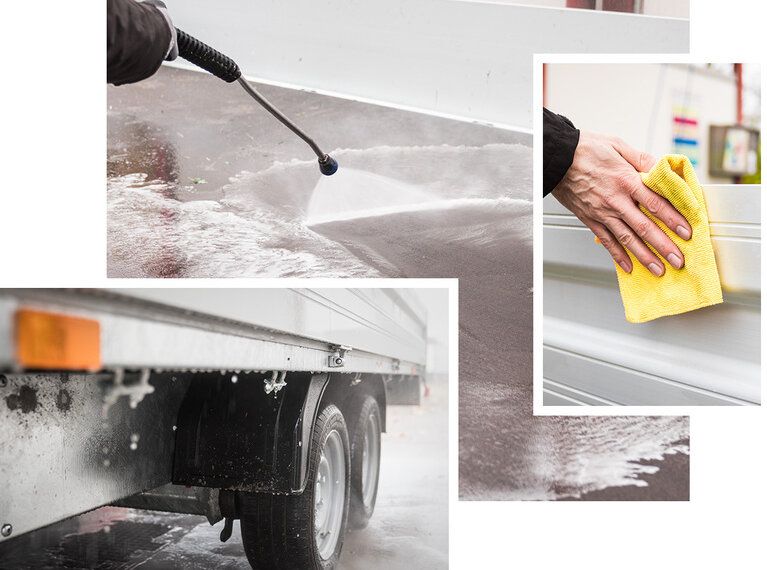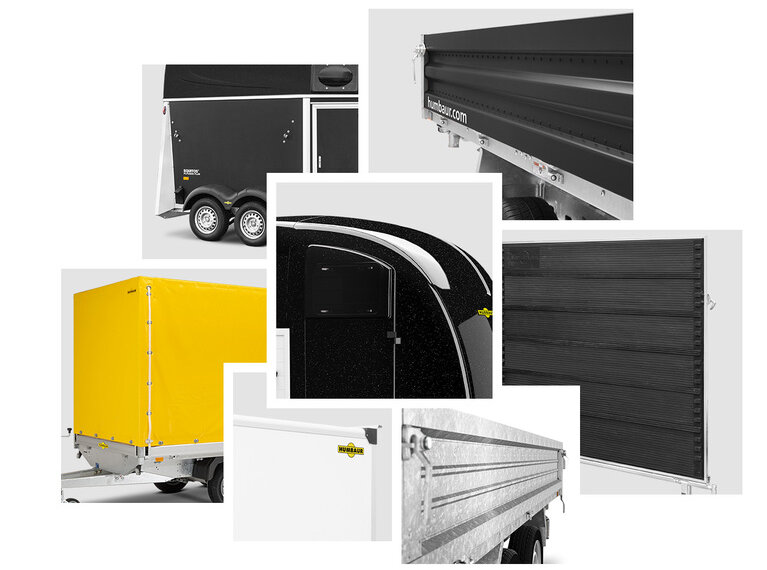
How do I clean my trailer correctly?
The lifespan and functionality of a trailer depend on how often and how thoroughly the trailer is cleaned and maintained. Cleaning and maintenance intervals depend on the intensity of use, the operating environment, and the level of soiling.
You will find our recommendations on how to clean your trailer in the following text.

Caution – Note before cleaning!
- Unplug the power supply before commencing cleaning work
- Clean new trailers only with clear, cold water during the first few months of use when possible
- Adhere to the safety distance when using a high-pressure cleaner and avoid spraying persistently at one point
- The following components should not be directly sprayed with water:
- Electric systems
- Tyres
- Wheel shock absorbers
- Gas struts
- Ball coupling
- Signage
- Hydraulic system
- Seals
We recommend cleaning these sensitive components by hand. Preferably use a damp cloth.

General trailer cleaning
We recommend that you clean the trailer regularly. Try to clean your trailer directly after use, where possible, as resilient dirt may become encrusted and corrode the trailer material.
General trailer cleaning can in principle be carried out on each trailer series:
First use a broom to remove coarse dirt from the cargo bed.
The loading area can then be cleaned with a high-pressure cleaner.
The internal walls of trailers can be washed by hand with lukewarm water and neutral cleaning agents.
Spray the trailer from the outside in a circular pattern using a high-pressure cleaner.
Clean resistant dirt as well as sensitive components by hand.
Where possible, park the trailer at an angle tilting backwards, so that the water can drain better and the trailer can dry. Ensure good air circulation in the trailer.
Take care that the oil and grease points of moving parts are again oiled or greased.

Material-specific particulars
Each trailer requires special care, in addition to general trailer cleaning. This usually depends on the material the trailer is made out of and should be strictly adhered to in order to prevent possible damage to the trailer. Here are a few hints as to what should be considered when cleaning specific trailer parts.
Galvanised metal surfaces are not resistant against corrosive chemical substances such as de-icing salts, fertilisers, etc. We recommend thorough cleaning with clear water after a drive (especially in the winter) to prevent corrosion and visual surface changes to the greatest extent possible.
Painted steel surfaces are somewhat protected from corrosion. However, they are not resistant to acidic substances and should be regularly cleaned after use.
Aluminium components with an anodised coating offer optimal protection against corrosion. The smooth surfaces can be cleaned with water and neutral cleaning agents. Additional aluminium and tarpaulin cleaners can be used to remove resistant soiling.
Wooden components can be cleaned according to the general trailer cleaning instructions. However, it must be ensured that the trailer dries out well, otherwise there is a risk of tension and hair cracks on the surface.
Plywood with a plastic coating is stable and easy to maintain. Cleaning can be carried out with water and neutral cleaning agents (e.g. plastic cleaner).
Hint: Damaged surfaces can be sealed with silicone to prevent penetration of humidity.
Tarpaulins can be easily cleaned by spraying them with a plastic and tarpaulin cleaner and leaving the cleaner to act. They can also be cleaned with a brush to remove resistant dirt. Spray the tarpaulin with water and let it dry.
Ensure that any writing on the tarpaulin is cleaned with special care.
Easy-care polyester components can be cleaned with water and neutral cleaning agent (e.g. plastic cleaner). Let the trailer dry out well. Provide an additional high-gloss finish by using a mild polishing paste. Apply wax when you want to seal the surface.
Rubber parts and seals should be regularly treated with talcum, petroleum jelly, or silicone spray so that they do not harden and crack.